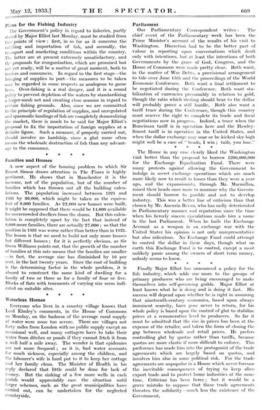Families and Houses A new aspect of the housing problem
to which Sir Ernest Simon draws attention in The Times is highly pertinent. ' He shows that in Manchester it is the increase, not of the population, but of the number of families which has thrown out all the building calcu- lations. The population increased between 1921 and 1931 by 30,000, which might be taken as the equiva- lent of 8,000 families. As 22,000 new houses were built, it might be supposed that there would be 14,000 available for overcrowded dwellers from the slums. But this calcu- lation is completely upset by the fact that instead of 8,000 more families, there are actually 27,000; so that the position in 1931 was worse rather than better than in 1921. The lesson is that we need to build not only more houses but different houses ; for it is perfectly obvious, as Sir Owen Williams points out, that the growth of the number of families at this rate means that the families are smaller —in fact, the average size has diminished by 16 per cent, in the last twenty years. Since the cost of building is the determining factor in the whole problem, it is absurd to construct the same kind of dwelling for a family of two or three as for a family of four or five. Blocks of flats with tenements of varying size seem indi- cated on suitable sites.
































 Previous page
Previous page